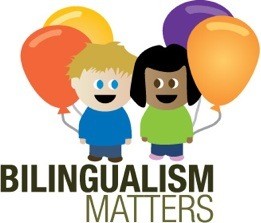Language acquisition depends on the same kinds of mechanisms that underpin broader cognition. This is the same as infants using the same abilities to acquire knowledge about the physical and psychological world, namely associative learning, learning by imitation, tracking statistical dependencies, tracking conditional probabilities, and making analogies. In the case of infants, they learn visually by imitating and babbling the parents and learn auditory by listening and trying out sound combinations. Social interaction plays an important factor to an infant developing natural language learning skills and statistical patterns. Auditory statistical information is amplified by other kinds of perceptual information that expresses meaning and reference when the infant learn a new natural language.
Infants do not only learn language by hearing sounds, but by social interaction as well. For infants to learn, two things are facilitated: “motherease” which is the use of caretakers of a special register speak to babies and “infant-directed speech” also known as IDS. IDS exaggerate prosodic register that emphasizes word and phrase boundaries, and appears to make the segmentation of the speech stream easier for the infant.
There are 4 major developments to language acquisition and one of them is the phonological development. Although a person may be fluent in a certain language, if someone from a different culture walks up to you speaking in a different language holding a specific item, you may be able to infer what they are saying, however, you really have no idea what the individual words that they are uttering are. This is known as phonological learning and there are two aspects to it. One is to learn the sounds and combinations of sounds that are permissible in a particular language, so that he brain can develop phonological representations of the sound structure of individual words. The second is learning to produce the words by yourself.
One way of phonological development is categorical perception. This is the idea that infants learn the phonemes that make up their language which is the short-hand term used for the individuals elements that make up words in languages. An example of these words is bat and bit or bat and pat. These words all differ by one phoneme which contains two types: the consonant phoneme and vowel phoneme. Within the first year of development, infants learn phonemes of their native language fast, but lose their ability to distinguish the phonemes of other languages. Another way of phonological development is phonotactic learning which helps us determine where one word ends and another words begins. According to Jusczyk and Aslin (1995), infants become able to extract words from continuous speech by about 7 months old.
Furthermore, infant-directed speech, rhythm, and prosody also play a role in phonological development as well as early phonological production, and cognitive neuroimaging of phonological development. Adults love to talk to babies in a special way and they tend to talk to babies using IDS which is usually a higher pitched and exaggerated intonation. There is no concrete evidence about that IDS helps infants pick words out of the speech stream, but there is extensive evidence that babies prefer to listen to motherease. Prosodic cues such as changes in duration and stress carry out important information about how sounds are ordered into words when the words are multisyllabic. Infants are actually very sensitive to general prosodic and rhythmic patterning in language. Mehler and colleagues have shown that infants as young as 4 days used information about rhythm and stress to distinguish their native language from other languages.
Additionally, in the early phonological production, infants first signal their caretakers by crying and also making other early nonvocal sounds such as grunting, sneezing, and coughing. Cognitive neuroimaging of phonological development uses tests such as the fMRI and EEF in infants and young children to measure meaningful responses without attention.
Although phonological development is central to language acquisition, the primary function of language is communication.
Lexical Development (building words) is consequently intimately tied to conceptual development. Infants as young as 4 months old can reliably recognize their own names and appear to have a relatively detailed phonological representation of this salient word. As children begin to learn particular languages, it t might be expected that linguistic differences will affect which aspects of conceptual categories become most salient. Infants are aware of spatial relations such as support and containment, for example, they know that “on” could be to match containment as well as to match attachment to a surface. Fast mapping is a “word-to-world” link suggesting that a powerful form of exclusion learning must be at work because children are fast at narrowing down the potential meaning of a new word. It is particularly hard to use neuroimaging to test how an infant builds a lexicon because words have to interpret within sentence or conversational contexts. An example of this is “reading between the lines.”
Grammatical development includes syntactic development which are grammatical rules that determine how words can be combined into sentences and phrases and morphological development governs the internal structure of words, for example, we can say “burglary” but not “stealery”. Certain uses of over-regulation of the past tense construction have been used when infants first start to learn how to add “–ed” to words. It has been demonstrated that adults provide extensive feedback when their children make errors in language production, but they do this by reformulating the child’s utterances rather than by overtly correcting it.
Language is about communication, and the “pragmatics” of language development is about learning how to communicate competently. Infants normally talk non-stop about themselves without realizing that the person that is listening was not there when the event occurred. They fail to adopt the perspective of their conversational partner and may also switch to many different topics while they speak, or without any warning. Pragmatics involve taking turns when you speak, or being polite and having social aspects of dialogue, but children often do not understand that and seem rude when they speak to others.
